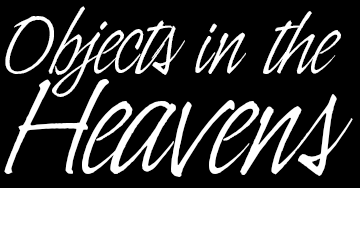


So what do I mean by "field resource"? I mean some form of printed material that serves as a repository for information (graphical, literary, or both) identifying and/or describing the characteristics of celestial targets. A field resource could be a star atlas, such as Orion's Deep Map 600, the Sky & Telescope Pocket Atlas, Herald-Bobroff Astroatlas, Edmund's Magnitude 6 Star Atlas, etc. A field resource, alternately, could be a field guide with textual and photographic information on celestial targets, but lacking star charts. Examples of such field guides include Burnham's Celestial Handbook and the Webb Society Handbooks. Often popular atlases will have a companion field guide. Sky and Telescope's Sky Atlas 2000 offers a companion field guide as does Uranometria. There are also certain field guides that while not whole-sky atlases, do provide finder charts for particular targets.
So now that we are on the same page with respect to what a field resource is, let's answer the question. Before doing so, however, let me tailor the direction of the discussion a bit to improve its relevance to the Beginner's Forum. There are two things I would like for us to bear in mind. First, beginners by definition haven't had as much star time as more experienced observers. This means that there is an even larger Universe of things that could be seen but have not yet been seen for the beginners than for any other class of observers. Second, while it's true that seasoned observers will have seen most if not all of the "best and brightest" targets their telescopes are capable of revealing, it is also true that the "best and brightest" objects remain the most impressive visually in any sized instrument. Even veteran astronomers typically spend as much time chasing showcase objects as esoterica.
With those two points in mind, I think that the best field resource for a beginner is one that concentrates on the best and brightest, provides useful information to help find the target in the telescope, and also provides sufficient information about each target to allow the observer to confirm that he or she has, indeed, observed the right target. Star atlases are great for identifying location, but relatively poor for providing information. Field guides typically have the opposite problem; great information with little help getting you there. So from my perspective the best beginner's field resource would have the following characteristics:
1. Covers all showcase objects of each category (stars, DSOs, etc.)
2. Provides sufficient graphical positional information to enable the observer to locate each object
3. Provides sufficient textual information to allow the observer to understand what to expect and to verify the observation
4. Because we've limited ourselves to "just one" for purposes of this discussion, is contained in a single, field-friendly volume.
So, with those criteria in mind, what is the best single field resource for the beginner in my opinion?
Peter Birren's "Objects in the Heavens" (often abbreviated "OITH").
http://www.birrendesign.com/astro.html
Let's see how Birren's work matches up with the criteria above. oith kicks off with some useful information about telescopes, techniques for measuring angular distances in the sky, annual meteor showers and the like. It then provides seasonal "planisphere scale" star charts helping the user get oriented for the session with the seasonal constellations visible. oith concentrates on objects magnitude 10 and brighter, ensuring that they will be visible in most any telescope, from most any locale.
The meat of the work is organized alphabetically by constellation much like a traditional field guide (e.g., Burnham's) would be organized. For each constellation Birren provides a list of targets, tabular data explaining what the object is and what it should look like, and then a small constellation chart plotting the location of each listed target relative to the main stars in the constellation.
The work is very compact 8.5" by 5.5" with laminated covers and a black spiral bound spine. This makes it easy to keep dry (close the cover between consultations), transport (it is small enough that it fits in the pocket of a parka), and use (the binding allows it to be opened flat on an observing table).
Covers showcase objects? Check.
Provides sufficient graphical information to locate the targets in the telescope? Check.
Provides sufficient "biographical" data for each object to permit confirmation? Check.
Field-friendly format? Check.
Regards,
Jim Barnett